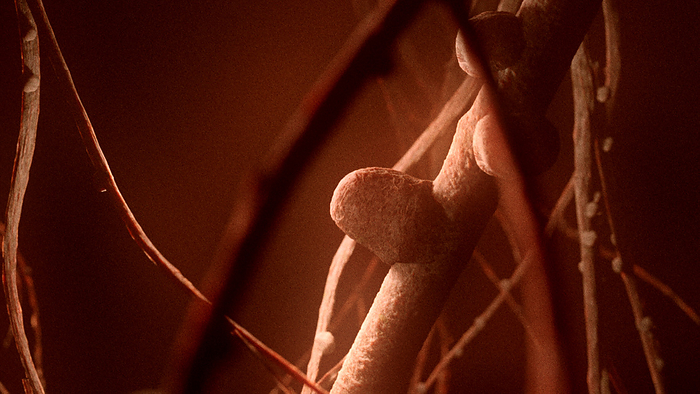
RM
Plant root nodules, illustration
Illustration of nodules formed by nitrogen-fixing soil bacteria on a plant's roots. The plant and the bacteria have a symbiotic relationship. The bacteria converts (fixes) atmospheric nitrogen in the soil to ammonia. The plant cannot carry out this process itself, but it is vital for the production of amino acids, the building blocks of proteins. In return the plant passes carbohydrates produced during photosynthesis to the bacteria for use as an energy source. The bacteria enter the plant through its root hairs., by THIERRY BERROD, MONA LISA PRODUCTION/ SCIENCE PHOTO LIBRARY

More
Top Categories
